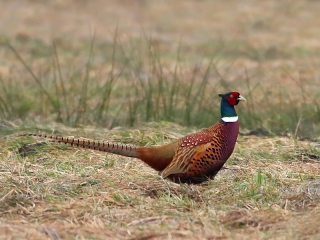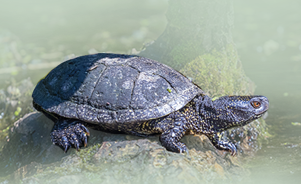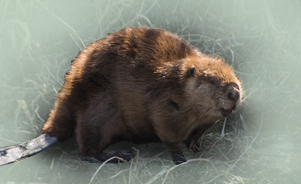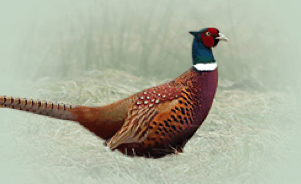The common pheasant Phasianus colchicus
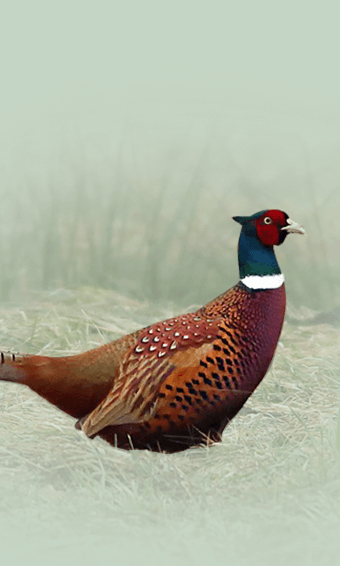
Features
The male often strolls through his own territory. During their wanderings, they flap their wings and emit a throaty scream with which they call females all day long.
| Species | Bird |
| Living space | Field, Meadow |
| Size | to 90 cm |
| Weight | to 1 kg |
Specialty habitat
Description
The pheasant is characterized by sexual dimorphism, which means that the male differs markedly from the females in size and coloration. The female is spleckled brownish gray and has brown eyes. The female measures 55-66 cm and weighs 0.8-1.2 kg. The male is significantly larger and heavier than the female as it is 80-90 cm high and weighs 1.25-2 kg. Half of their total length is in their tails. The male is golden yellow, with a long tail. The head is metallic green with red skin around the eyes, which is particularly pronounced and swollen during reproduction. There may be a white collar on the neck and two ponytails on the head. The legs are greyish and on the back of the legs there are spurs, which are usually longer in elderly males. The male has yellow eyes. The pheasant mostly moves along the ground as it runs extremely well. They fly both quickly and relatively well, but only short distances. The pheasant is one of the multi-species (polygamous) species, which means that a single male will have more female mates. The most powerful males are able to gain the best territories and, thus, more females. At the time of reproduction, the pheasant is a very territorial animal. In May, the female pheasant lays 8-18 eggs in a simple nest (pit) on the soil, which hatch in 24 days. If the first nest fails, they will build a second and sometimes a third. Only the females care for the chicks. The chicks and the female remain together for 12-15 weeks approximately. The pheasant is an omnivore.The common pheasant
on the habitat Temenica
When you first hear the flapping of their wings in the spring followed by their characteristic "cackle", we know that pheasants are nearby. They can be spotted year round.
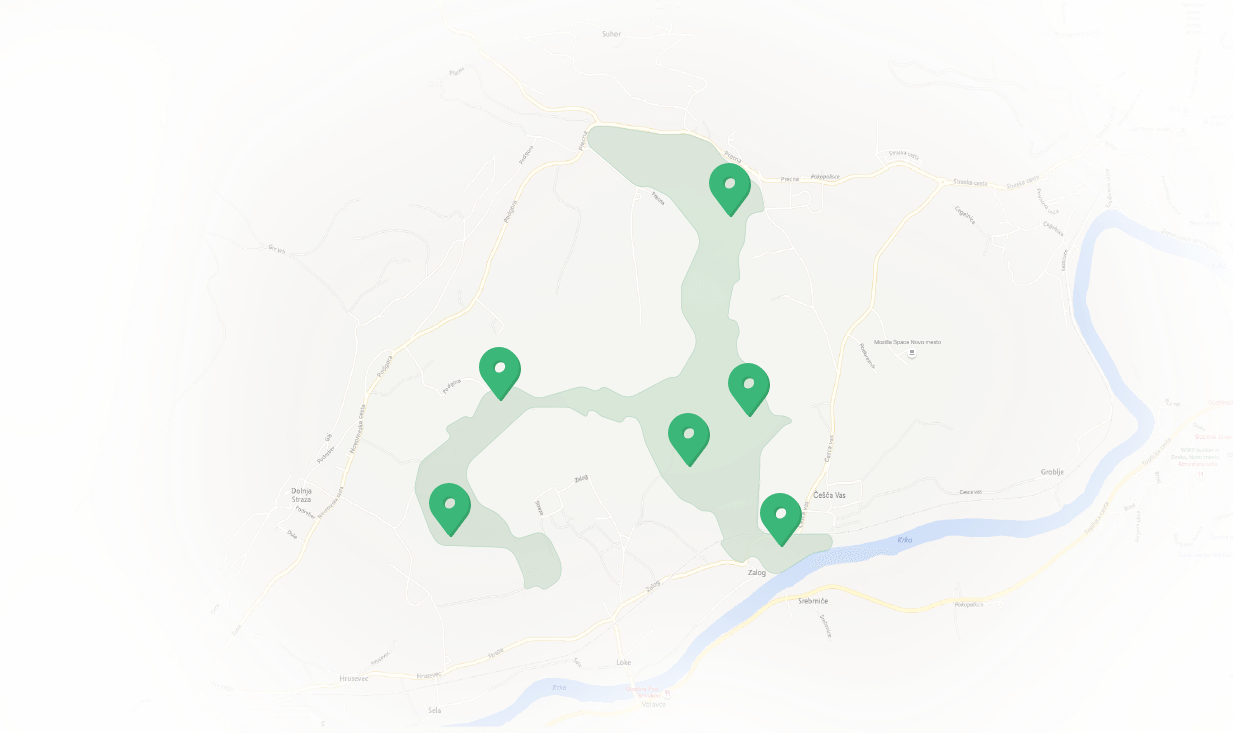
Features Temenica (3)
SPECIAL ogr.

